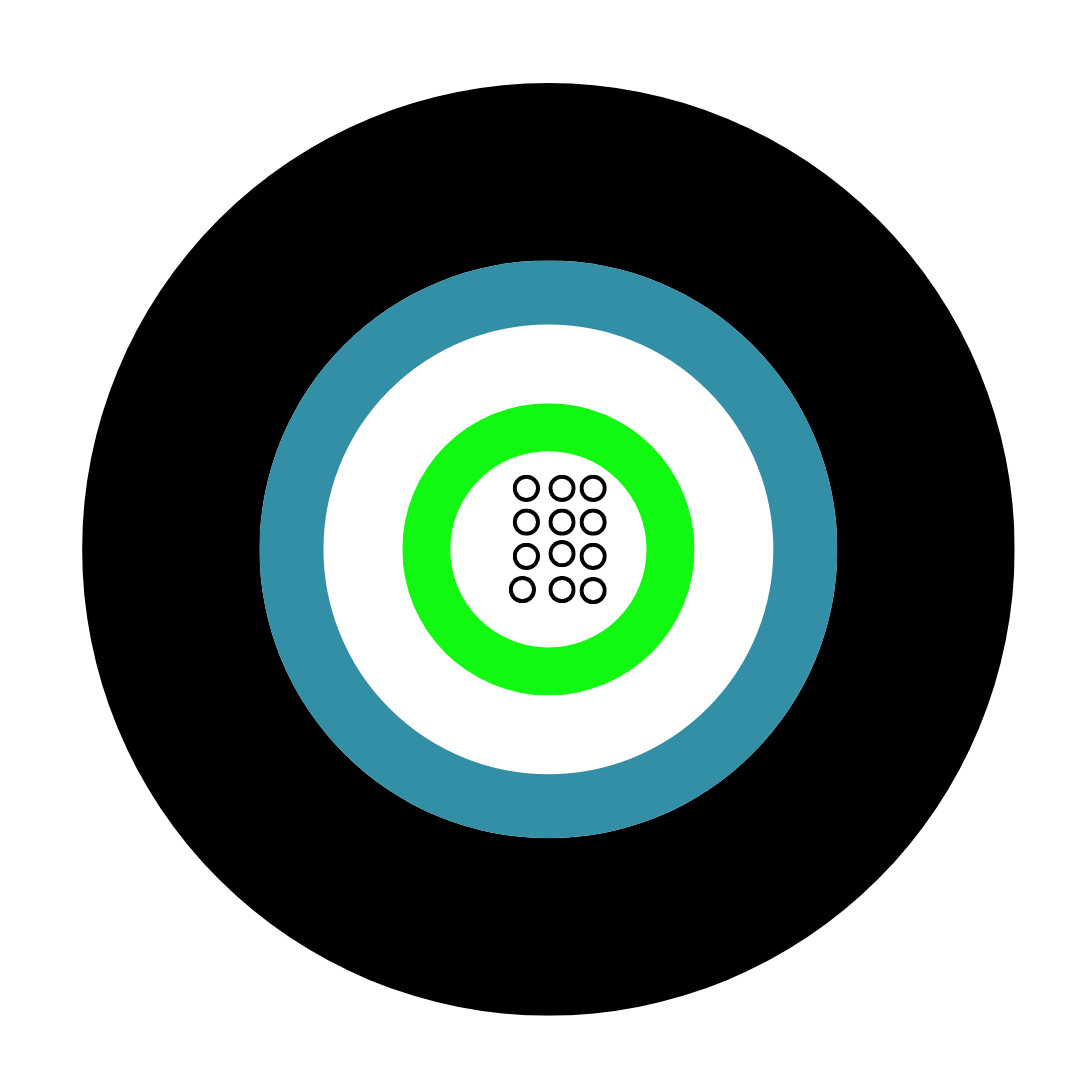The use of halogenated compounds in cables has decreased in the last few years and polymers such as PVC are being phased out, particularly in enclosed, high-density cable applications.
Instead, low-smoke and zero halogen compounds are being used in cable jacketing as they are designed with fire safety and reliability in mind.
In this article, we’re going to be explaining exactly what LSOH cables are and why you should use them for your next project.
What is a LSOH Cable?
LSOH cables are designed with polyolefin based thermoplastic jackets, which have high fire resistance and reduce toxic gas emissions.
These cables also emit less optically dense smoke at a lower rate, compared to traditional PVC sheathed cables, which create thick black clouds of toxic smoke when they come into contact with fire.
This enhances fire protection by making it easier for occupants to exit a space and increases the safety of firefighting operations thanks to improved visibility.
Their use is critical in public buildings, transportation systems, and areas where wiring is dense, like data centres.
LSZH vs Traditional Cables
When comparing LSZH cables to standard cables, the key differences lie in their composition and the safety level they provide. Traditional cables, often PVC-based, release chlorine, a halogen, when burned, leading to the production of thick, toxic smoke.
LSOH cables, however, are free of halogens, which could be the difference between life or death in the event of a fire.
Is LSZH Cable Fire Resistant?
One of the primary characteristics of LSZH cables is their fire resistance. While no cable is entirely fire-proof, LSZH cables are designed to withstand high temperatures better and resist combustion. In the event of a fire, these cables will burn at a much slower rate than traditional cables, reducing the spread of flames.
Benefits in Safety-Critical Environments
The fire-resistant properties of LSZH cables make them ideal for use in safety-critical environments such as hospitals, schools, and airports. In these settings, the safety of individuals is critical, and the reduced risk of toxic smoke inhalation can be life-saving during a fire emergency.
Is LSZH Cable UV Resistant?
LSZH cables also exhibit good resistance to ultraviolet (UV) light, making them suitable for both indoor and outdoor applications. The materials used in LSZH cables are treated to withstand UV radiation, which helps in preventing degradation over time.
Applications and Longevity
The UV resistance of LSZH cables extends their lifespan, particularly in installations where exposure to sunlight is constant, such as in outdoor arenas or along exterior walls of buildings. This durability, coupled with their safety features, makes LSZH cables a versatile and long-lasting choice for a wide range of wiring projects.
LSZH Cable Regulations
The manufacturing and application of LSZH cables are governed by a variety of safety standards and regulations. These guidelines ensure that cables used in construction and electronic applications adhere to safety, health, and environmental protection standards.
Overview of Relevant Safety Standards and Regulations
In the UK and Europe, LSZH cables must comply with standards such as the Construction Products Regulation (CPR) for cables, which includes specifications for fire performance. Additionally, these cables often need to meet the requirements of the British Standards (BS), particularly BS EN 50575.
LSZH cables are designed with materials that not only reduce smoke and eliminate halogen emissions but also meet the flame spread and heat release requirements set by these standards. They undergo rigorous testing for smoke density, corrosivity, and flame propagation to ensure compliance.
Where is LSZH Cable Used?
Low Smoke Zero Halogen cables are versatile and can be used in a wide range of environments, owing to their safety features and durability. Their application spans across different sectors, from residential to industrial.
In the industrial sector, LSZH cables are often used in areas where cable fire could severely impact operational continuity, such as in power plants, factories, and refineries. In the public sector, their application is crucial in hospitals, schools, and transportation systems, where safety and minimal toxic hazard in the event of a fire are priorities.
One notable example is the use of LSZH cables in the London Underground. After the King's Cross fire in 1987, there was a significant move towards using LSZH cables across the network to reduce the risk of toxic smoke in fires. Another example can be seen in data centres worldwide, where LSZH cables are preferred to protect sensitive equipment and maintain air quality.
LSOH Cables in Residential Settings
In residential settings, LSZH cables are becoming increasingly popular, especially in high-rise buildings and complexes. Their use is critical in minimising the risks associated with electrical fires. The low smoke emission ensures better visibility and reduced inhalation hazards during evacuation, a key safety feature for homes.
LSOH Cables in Commercial Buildings
LSOH cables are a staple in modern commercial buildings, including offices, shopping centres, and entertainment venues. This helps to improve the safety of a large number of people and valuable assets.
Why Use LSZH Cables?
Advantages over Traditional Cables
The primary advantage of LSZH cables is in their composition which ensures low smoke emission and the absence of halogen when exposed to fire. This contrasts with traditional PVC cables, which can release dense, toxic smoke and halogenated gases like chlorine and bromine.
LSZH cables provide improved visibility in fire situations, reducing the risk of smoke inhalation injuries.
Environmental and Safety Considerations
From an environmental standpoint, LSZH cables are less harmful as they do not release halogenated gases that contribute to environmental degradation and pose health risks. In terms of safety, the use of LSZH cables minimises the risk of fire spreading, as they are more resistant to combustion compared to traditional cables.
LSZH Cables are a Fire Retardant Solution
LSZH cables are designed to be fire retardant. They are made from materials that have a high ignition point, which means they take longer to catch fire. Additionally, when they do burn, they emit less heat, reducing the likelihood of propagating the fire. Their composition limits the amount of oxygen available to fuel a fire, further inhibiting fire spread.
Installation and Maintenance of LSZH Cables
Proper installation and maintenance are crucial for maximising the performance and longevity of LSZH cables. Following best practices in installation and regular maintenance can significantly enhance their efficiency and safety.
Assess the Environment
Before installation, assess the environment for factors like temperature, humidity, and exposure to sunlight. LSZH cables have specific environmental tolerances that should be considered for optimal performance.
Use the Right Tools
Employ appropriate tools and techniques to avoid damaging the cable insulation and conductors. Over-tightening, sharp bends, and rough handling can compromise the cable's integrity.
Cable Routing
Plan the cable routing to minimise exposure to potential hazards and to ensure easy access for inspection and maintenance. Avoid areas with high risk of mechanical damage or extreme environmental conditions.
LSOH Frequently Asked Questions (FAQ)
Is LSZH cable fire resistant?
Yes, LSZH cables are fire resistant. While no cable can be entirely fireproof, LSZH cables are designed to resist ignition and slow down the spread of fire. Their construction materials have a higher ignition point compared to traditional cables, which helps in reducing the risk of fire propagation.
How does LSZH compare to traditional cables in terms of safety?
In terms of safety, LSZH cables offer significant advantages over traditional cables. The key difference lies in their ability to emit less smoke and no halogenated gases when exposed to fire. This reduces the risk of smoke inhalation and exposure to toxic gases, which are major hazards in fire incidents. Additionally, their flame retardant properties make them safer in terms of fire prevention and containment.
Can LSZH cables be used outdoors?
Yes, LSZH cables can be used outdoors. They are often treated for UV resistance, which makes them suitable for external applications. However, it's important to choose the right type of LSZH cable designed for outdoor use, as environmental factors like sunlight, temperature fluctuations, and moisture can affect cable performance and longevity.
What’s the difference between LSF and LSOH?
LSF (Low Smoke and Fume) cables are made from a modified version of PVC, however, they can still emit up to 22% hydrogen chloride when burned and large amounts of black smoke. This black smoke can obscure exit routes during a fire, and hydrogen chloride gas can be harmful to both people and equipment. LSOH (Low Smoke Zero Halogen) cables, when exposed to fire, emit no more than 0.5% hydrogen chloride and burn cleanly compared to LSF cables.
What is the BS EN/IEC 61034 (smoke density) test?
The BS EN/IEC 61034 test measures the amount of smoke generated by burning cables. The test is also referred to as the three metre cube test as it is performed inside a chamber measuring 3x3x3 metres for 40 minutes.
During the test, a white beam of light is beamed through the chest and monitored. In order to pass the test and achieve the title ‘LSOH’, there must be an excess of 60% light visibility through the smoke.
What is the BS 50267 & BS EN/IEC 60754 (acid gas emissions) test?
The acid gas emissions test determines the levels of acid gases evolved during the combustion of cables. 1g+/-0.005g of insulation material is placed inside a tube furnace and heated for 30 minutes at 935ºC. The catch solution absorbs any gases produced, which is then made up into a litre of liquid.
Testers will then measure the pH of the solution and the conductivity values.
In order to mass as LSOH, materials must have a pH no less than 4.3 and mustn’t exceed a conductivity of 10µS/mm.
Alarm Cable
Arctic Grade Cable
Armoured Cable
Audio & Speaker Cable
Auto Cable
Bare Copper
Belden Equivalent Cable
Co-axial Cable
Data Cable
DC Telecom Cable
Defence Standard Cable
Emergency Lighting & Fire Detection Cable
EV Cable
Festoon
![Loose Tube Fibre Cross Section]()
Fixed Wiring PVC & LSOH Cable
Flatform
Flexible Control Cable
Flexible PVC Cable
Flexible Rubber Cable
General Wiring Cable PVC & LSOH
High Temperature Cable
High Voltage Cable
![5308 p1 t2 cat Cross Section]()
LSOH Flexible Cable
Medium Voltage Cable
NYY & N2XH Cable
Protected Wiring Cable
Silicone Cable
Solar Cable
Split Concentric Cable
Spiral Cable
Temporary Power Cable
Tri-Rated Cable
Welding Cable
Alarm Cable
Arctic Grade Cable
Armoured Cable
Audio & Speaker Cable
Auto Cable
Bare Copper
Belden Equivalent Cable
Co-axial Cable
Data Cable
DC Telecom Cable
Defence Standard Cable
Emergency Lighting & Fire Detection Cable
EV Cable
Festoon
![Loose Tube Fibre Cross Section]()
Fixed Wiring PVC & LSOH Cable
Flatform
Flexible Control Cable
Flexible PVC Cable
Flexible Rubber Cable
General Wiring Cable PVC & LSOH
High Temperature Cable
High Voltage Cable
![5308 p1 t2 cat Cross Section]()
LSOH Flexible Cable
Medium Voltage Cable
NYY & N2XH Cable
PAS - BS5308 Instrumentation Cable
Protected Wiring Cable
RS-232 Cable
RS-485 Cable
Silicone Cable
Solar Cable
Split Concentric Cable
Spiral Cable
Telephone Cable
Temporary Power Cable
Traffic Signal Cables
Tri-Rated Cable
Welding Cable










































